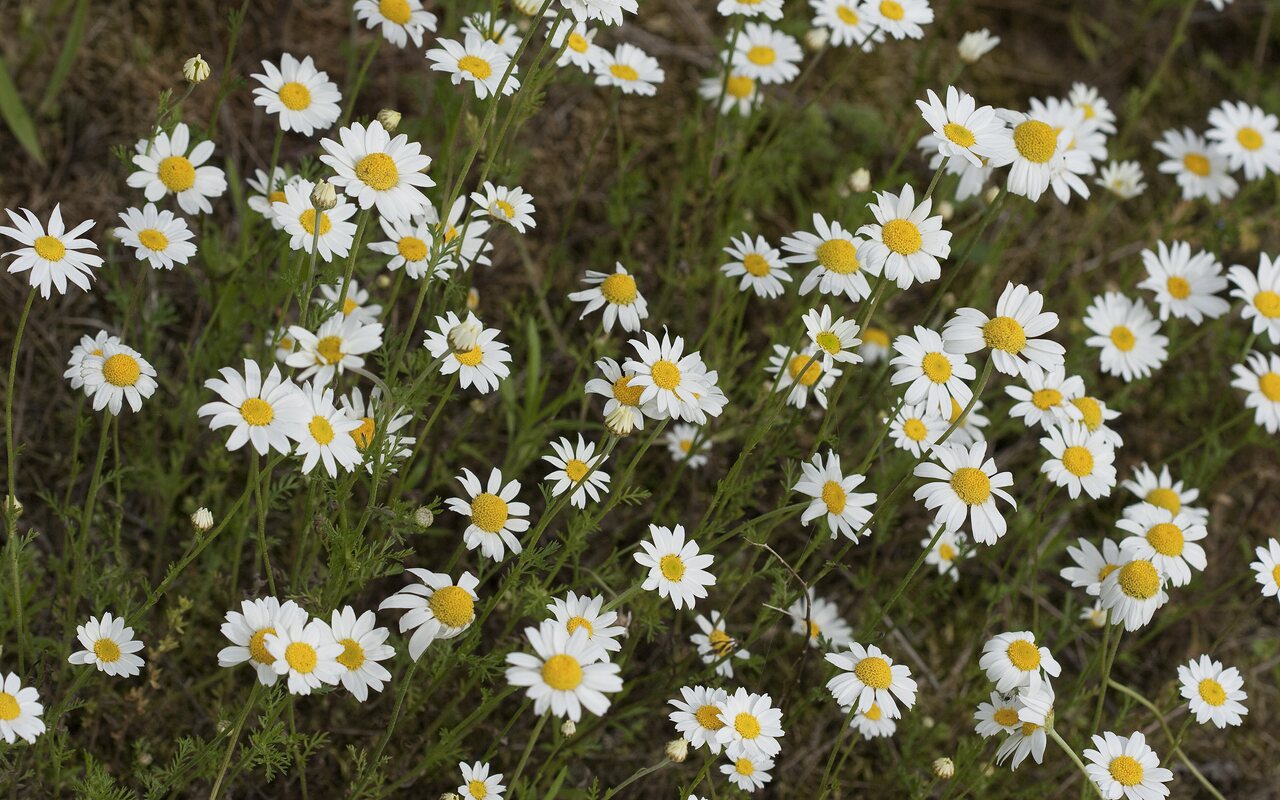
Matricaria chamomilla · vaistinė ramunė
- Matricaria recutita
- Blue Chamomile, chamomile, camomile, scented mayweed
- Echte Kamille
- vaistinė ramunė, ramunėlė
- ārstniecības kumelīte
- rumianek pospolity
- en.wikipedia.org/wiki/Matricaria_chamomilla
- luontoportti.com/en/t/1350/scented-mayweed
- gbif.org/species/8370958
It is native to southern and eastern Europe and can be found on all continents, has a branched, erect and smooth stem, and grows to a height of 15–60 cm. The long and narrow leaves are bipinnate or tripinnate. The flowers are borne in paniculate flower heads (capitula). The white ray florets are furnished with a ligule, while the disc florets are yellow. The hollow receptacle is swollen and lacks scales. The flowers bloom in early to midsummer and are fragrant.
The essential oil of the flowers gives them a characteristic smell and has interesting properties. The blue color of the oil, attributable to the chamazulene it contains, explains why the plant is also known by the common name blue chamomile. The fruit is a yellowish-brown achene. The plant is commonly used to make a tea.
Vienmetis žolinis augalas. Stiebas stačias arba gulsčias, dažniausiai šakotas. Lapai bekočiai, plunksniškai susiskaldę. Žiedynas – nedidelis ilgakotis graižas, žiedas baltas. Vaisius – lukštavaisis. Žydi gegužės – rugsėjo mėnesiais. Auga pakelėse, laukuose, prie namų.
‥
0 comments
Add a comment
Comments